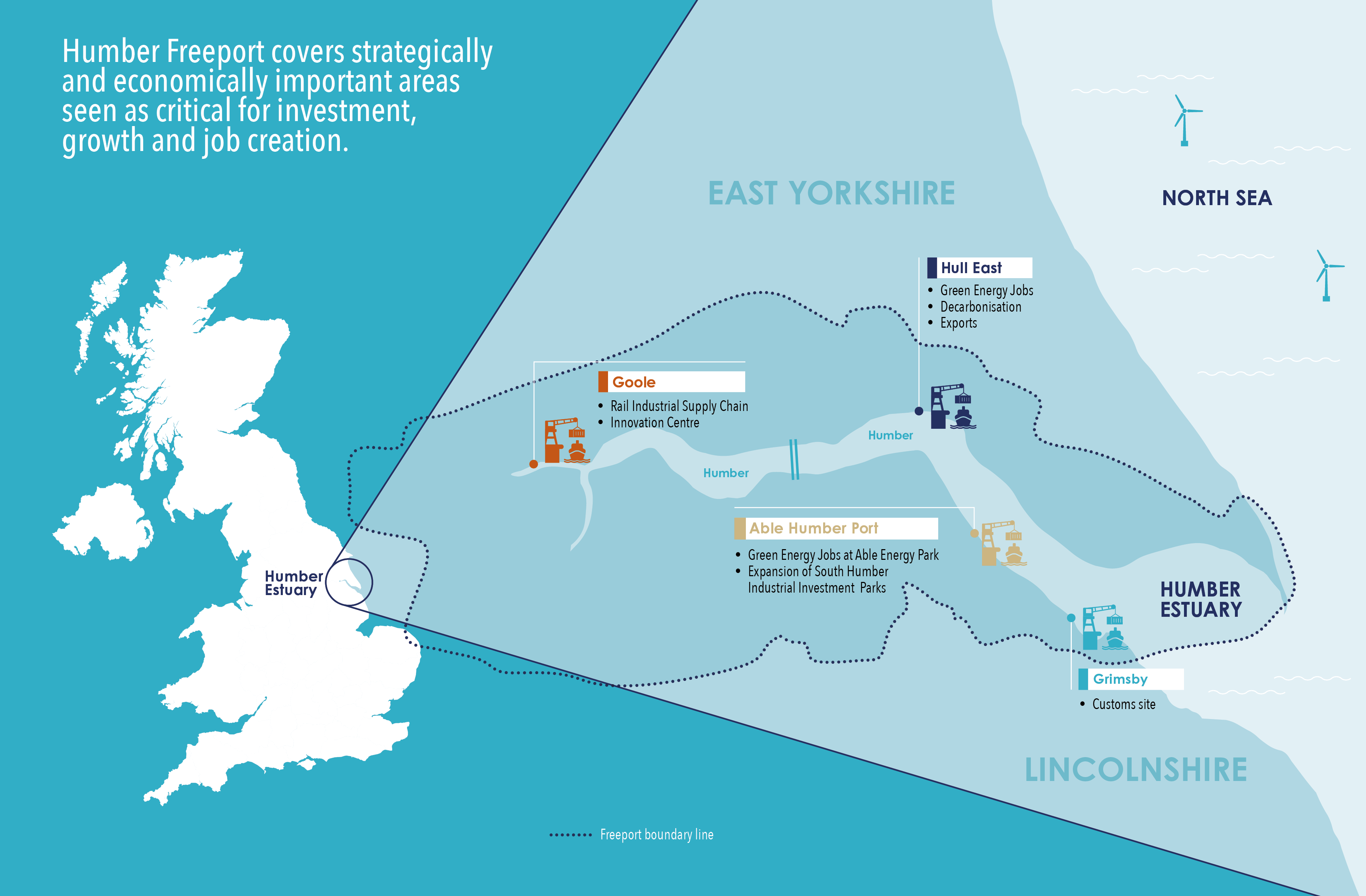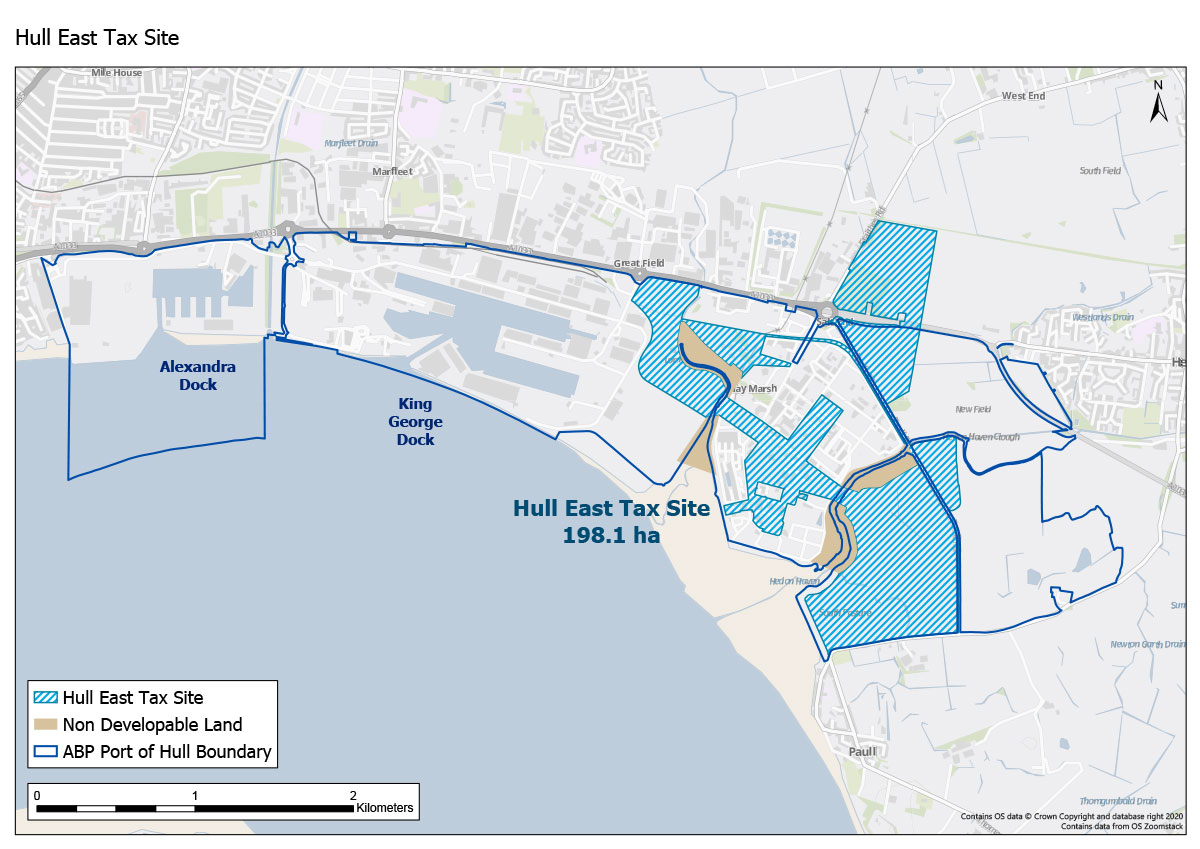Spotlight on the Humber
Humber Freeport is centred around the Humber Estuary, the largest coastal plain estuary on the east coast of Britain.
The Humber Estuary is home to the UK’s largest port complex, with an average of 40,000 ship movements every year. The region has a long and proud history of trade, and a rich maritime heritage.
Located half way up the UK – almost equal distance between London and Edinburgh – the Humber provides easy access to a large area of the country including the East and West Midlands, Yorkshire and the North East, Lancashire and the North West and the M1 corridor.
Its location means the economic impact of the Humber region is felt not only across the UK, but across mainland Europe and beyond.
The Humber port complex is centred around the four locations of Hull, Goole, Immingham and Grimsby. The iconic Humber Bridge – once the longest suspension bridge in the world – connects the north and south banks of the Humber.


Freeport footprint
Humber Freeport covers strategically and economically important areas seen as critical for investment, growth and job creation.
The Freeport area includes three tax sites, located at:
- Able Humber Port and Immingham
- Hull East, centred on the Saltend Chemicals Park
- Goole, adjacent to the Siemens Mobility rail plant
Able Humber Port is a fully consented project and a bespoke port facility for the renewable energy sector, particularly offshore wind. Able will invest circa £450m to develop 1,340m of new deep-water quays, lay down lands and manufacturing facilities.
The Goole tax site represents a unique opportunity to co-locate with the new Siemens rail factory currently under construction, creating the opportunity to be part of that facility’s supply chain. The tax site is a large undeveloped site with excellent transport links to Hull, Goole, Scunthorpe as well as Doncaster, Leeds and Wakefield.
At the heart of the UK energy transition, Saltend is the country’s premier location for world-class industrial businesses to prosper. Owned and operated by px Group, Saltend is strategically positioned on the north bank of the Humber. The 370-acre site is home to some of the world’s leading blue-chip manufacturing, chemicals and renewable energy businesses.
The Humber region spans four local authority areas – Hull City Council, East Riding of Yorkshire Council, North Lincolnshire Council and North East Lincolnshire Council.

Hull East
The Hull East tax site takes in several different parcels of land. They are ABP’s Humber International Enterprise Park, the Yorkshire Energy Park, Saltend Chemicals Park and eastern portion of the Port of Hull.
Hull East will be host to a new hydrogen plant bringing the opportunity to decarbonise Saltend Chemicals Park and create exportable surplus of hydrogen and decarbonised chemical products. It is also home to The Yorkshire Energy Park which offers immediate developable opportunities including incubation spaces.

Goole
A unique opportunity to co-locate supply chain for the new Siemens rail factory (under construction). The site takes in a large undeveloped site with excellent transport links. The site is ideally situated to address deprivation in Hull, Goole, Scunthorpe as well as East Yorkshire (Doncaster, Wakefield)

Able Humber Port
This is centred on Able Humber Port, with scope for rapid development in new offshore wind manufacturing jobs. The site also includes a portion of ABP’s coal stock yard which can be redeveloped once the coal trade ceases in the next two years.

